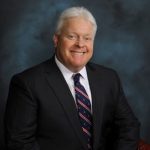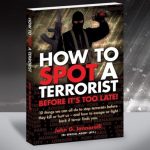Active Shooter Awareness and Preparedness for Multihousing Communities
Almost every day we see another news story about the latest active shooter attack. The vast majority of these attacks take place during the day-time hours, which is when business operations occur for the multi-housing communities. Such an attack puts not only the community employees at risk, but likewise jeopardizes the safety of those who are residents.
Additionally, while the unwarranted loss of life or physical injury will always be the primary concern in preventing such tragedies, communities can be further affected by these attacks in the form of financial repercussions that include lawsuits for compensation brought by the victims and their families, as well as the medical expenses for treatment of the injured. Hence it is in best interest when operating such communities, both physically and financially, that those in positions of authority take action to help protect the employee and their resident customers. Developing an active shooter response plan, and training those within the community on the proper measures to take during such an event, is an actionable means by which to mitigate the potential damage of an active shooter threat.
Last year there were 611 documented massing shootings, occurring in various community locales, such a Buffalo New York grocery store in which 10 people were killed, an elementary school in Uvalde, Texas that took the lives of 22 young children, and the attack on the 4th of July parade in Highland Illinois that left 7 dead and another 48 wounded on the sidewalks. History has shown that a mass shooting can occur anywhere and at any time, and a strong likelihood exists that further active shooter attacks will continue in the future.
Law enforcement defines an active shooter as an individual who is actively engaged in killing or attempting to kill persons in a confined and populated area, typically through the use of a firearm. A mass shooting is further characterized by three or more deaths occurring as a result of the attack. Active shooters typically act alone, and rarely take hostages or negotiate with authorities before the incident is over. On the average, a mass shooting attack will last approximately five minutes, enabling the attacker significant time to cause tragic consequences before law enforcement is able to arrive. The length in time of these incidents, exacerbated by the limitations of the responding police, reiterates the need for communities to be proactive and implement an active shooter response plan in order to best protect both their employees and residents.
An active shooter response plan should incorporate policies that advocate the strategy of “Run-Hide- Fight”. Training would ensure, should the circumstances permit them to do so, that persons are encouraged to immediately flee (i.e.; run) when made aware of the presence of an active shooter. Alternatively, training would further stress that if running is not an option, persons should immediately attempt to hide, doing so according to the active shooter response plan of securing themselves within an area not accessible to the attacker, such a community center restroom or storage closet where the door can be locked or barricaded. Finally, the training would further instruct that when the ability to run or hide is not viable, persons should attempt to fight off the attacker as proscribed by the response plan; i.e., assault the attacker by whatever means possible, such as throwing objects. The goal of the fight strategy is not to ultimately overtake the attacker, but rather exercise sufficient effort to disrupt the attack, thereby creating an opportunity to then either run or hide.
Active shooter training should further afford an understanding what actions to take as persons escape the danger and encounter arriving law enforcement, such as displaying empty and raised hands so as not to be mistaken for a potential threat. This training should also address the importance of providing responding officers with valuable information, to include the description and location of the shooter, as well as the number and severity of injured victims.
Equal in importance of understanding how to respond to a mass shooting attack, an active shooter response plan should also identify the potential warning signs that might help prevent such a tragedy. These warning signs may consist of discernable displayed behaviors that raise concern regarding a potential future active shooter situation. Such behaviors may include social media posts containing threatening statements or an individual openly stating their interest in committing a violent act. The recognition of potential warning signs that suggest violence allows the opportunity intervention. Affording assistance to a troubled individual in advance of their acting out can not only usurp intended violence, but further provide the added benefit of furnishing the individual with needed support.
No one ever wants to be in the midst of an active shooter situation. Unfortunately, history has shown that mass shootings happen with a certain degree of regularity, to include occurring during business hours and in the workplace. Communities should develop an active shooter response plan and train those for whom they are responsible to act appropriately in such situations. Likewise, while difficult to predict and prevent a mass shooting, being aware of probable indicators of violence, and initiating the appropriate intervention actions, can reduce the potential for a mass shooting incident. Having an active shooter response plan can serve to enhance the safety of the community employees and the residents.
About the Author:
John Iannarelli retired from the FBI after more than 20 years of service, during which he was a member of the FBI SWAT Team and participated in the investigations of the Oklahoma City Bombing, the 9/11 attack, the shooting of Congresswoman Gabrielle Giffords, and the Sony hack. Among his many FBI assignments, John served in Washington, D.C. as the FBI National Spokesperson and on the Executive Staff of the FBI’s Cyber Division. He was a Squad Supervisor before becoming the Assistant Special Agent in Charge, the number two position overseeing all Criminal, Cyber and Counterintelligence investigations. During his career John was presented with the FBI Director’s Distinguished Service Award.
A former San Diego Police Officer and attorney with international studies at Oxford, England, John is admitted to the practice of law in California, the District of Columbia and Maryland. He was also an NFL Security Representative responsible for ensuring public safety throughout the football season and Super Bowl. In addition, he is the recipient of an Honorary Doctor of Computer Science in recognition of his contributions to the field of cyber investigations.
John is the author of five books, including Why Teens Fail and What to Fix, a parents’ guide to protecting their children on the Internet and other dangers, and How to Spot A Terrorist Before It’s Too Late. His just released 5th book, Disorderly Conduct, examines the lighter side of law enforcement and the humorous moments during John’s FBI career.
John is a frequent on-air contributor for the national news media and has been profiled in Forbes. He provided live on-scene coverage from Las Vegas of the Mandalay Bay mass shooting attack as it occurred. An engaging and entertaining keynote speaker, John is a National Speakers Association Certified Speaking Professional ® known for sharing his intriguing insights combined with his superb sense of humor. He has presented to Fortune 500 companies, domestic and international audiences, the United Nations, and the Vatican, where he has personally met on several occasions with Pope Francis.



